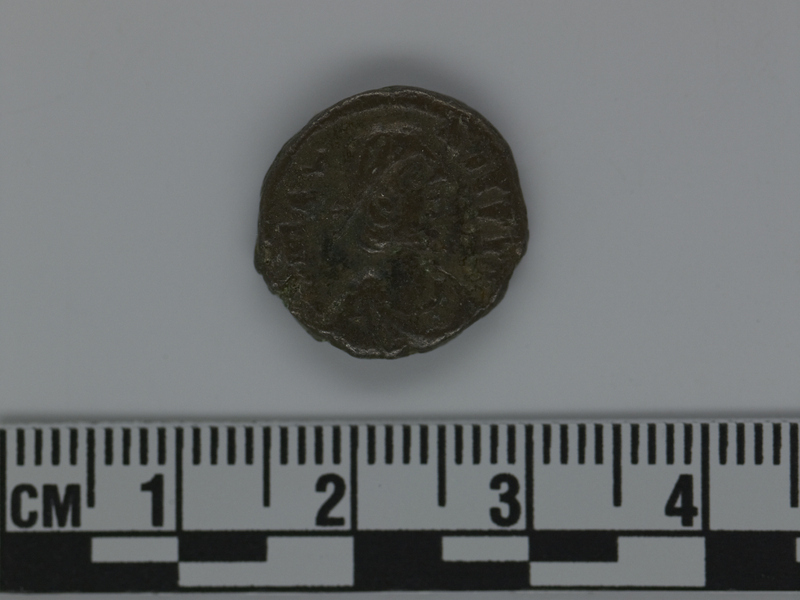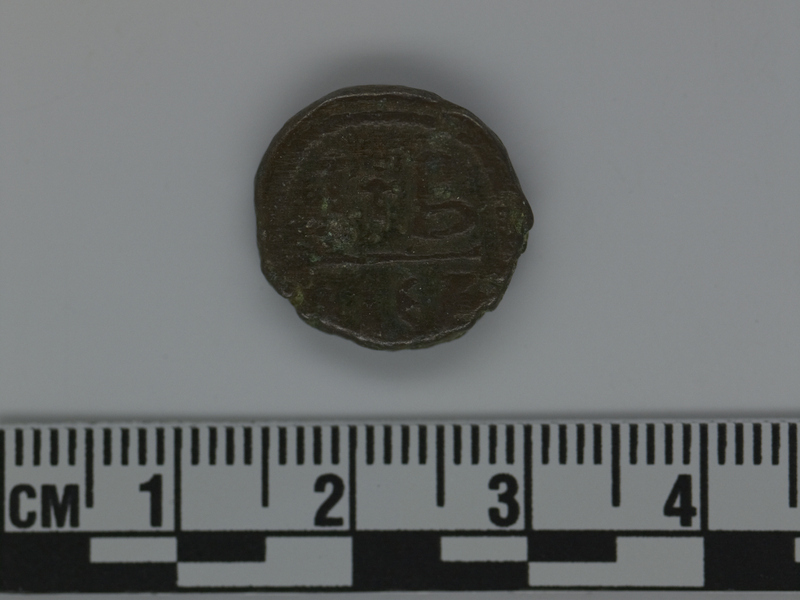Coin Item Number: 3095/145 from the MOA: University of British Columbia


Description
Byzantine coin of Justinian I, 527-565. Obverse: bust of Justinian I, facing right, with diadem; inscriptions are illegible. Reverse: large 'I' and 'B' with a cross in between; beneath, 'AΛEΞ'.
History Of Use
"12 nummi" (denomination)' DO# 274; Sear# 247. Illegible writing it likely "DN IVSTINIANVS PPAVG", which extends into “Dominus Noster Justinianus Pius Perpetuus Augustus". It translates to "Our Lord Justinian Pious Eternal August". "AΛEΞ” translates to "Mint: Alexandria." This type of coin, the follis, is a large bronze coin that was introduced by the Emperor Anastasius in 498, marking a large departure from the Roman system of coinage inherited by the Byzantine Empire. It was the model for bronze Byzantine coinage for 200 years, facilitating small-scale trade and commerce. Originally, the basic follis in Constantinople was a heavy coin worth 40 nummia, with smaller follis parts equaling 20, 10, or 5 nummia. When the coin was debased and made lighter the value of it would decrease. Each provincial mints had their own divisions. In Alexandria the mint continuously produced follis parts worth 12, 6, and 3 nummia, until the province was lost to the Arab conquests. The 12 nummia coin made up the majority of the local small currency, circulating only within Egypt.
Iconographic Meaning
The face of the emperor on coins was a symbol of his authority. The portrait of Justinian I is not characterized to him, instead reflecting general reference for the station and title of emperor. The Christian cross on the reverse of the coin was introduced to Byzantine coinage in the 5th century, and was by the time of Justinian I quite common. It emphasized the Christian nature of both the emperor and the empire.
Item History
- Made in Alexandria, Egypt between 527 and 538
- Owned by David Herman before February 2, 2015
- Received from David Herman (Donor) on February 2, 2015
What
- Name
- Coin
- Identification Number
- 3095/145
- Type of Item
- coin
- Material
- bronze metal
- Overall
- height 0.2 cm, diameter 1.3 cm
Who
- Culture
- Byzantine
- Previous Owner
- David Herman
- Received from
- David Herman (Donor)
Where
- Holding Institution
- MOA: University of British Columbia
- Made in
- Alexandria, Egypt
When
- Creation Date
- between 527 and 538
- Ownership Date
- before February 2, 2015
- Acquisition Date
- on February 2, 2015
Other
- Item Classes
- metalwork
- Condition
- good
- Accession Number
- 3095/0145